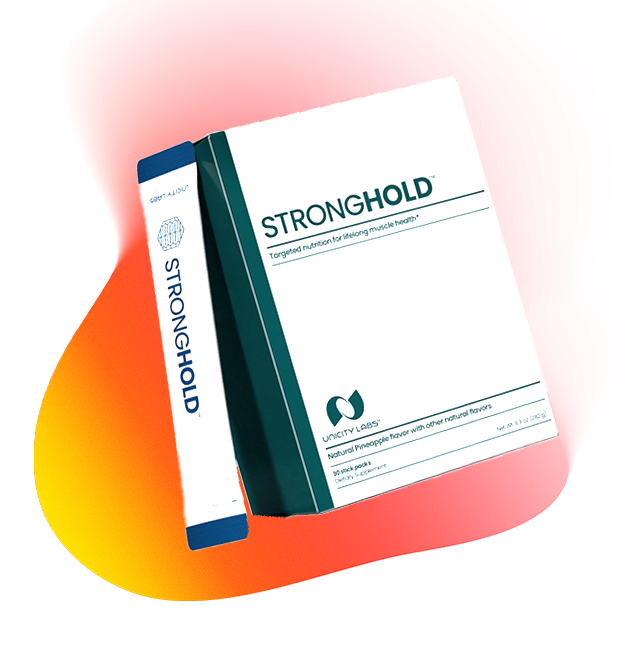Have you noticed your muscles feeling weaker as the years go by? While many believe muscle loss is an unavoidable part of aging, research shows that it doesn’t have to be. The decline, known as sarcopenia, can be slowed—or even reversed—through the right combination of resistance training, smart nutrition, supplements, and lifestyle habits.
This guide explains why muscle loss happens, how to prevent it, and what strategies you can start today to stay strong, mobile, and independent well into older age.
Why Muscle Loss Happens with Age
- After the age of 30, muscle mass naturally decreases by about 3–5% per decade.
- The process accelerates after age 60, affecting balance, energy, and independence.
- Causes include hormonal changes, less physical activity, and inadequate protein intake.
The good news? You can strengthen, rebuild, and protect your muscles at any age.
Resistance Training: The Foundation of Muscle Health
Strength training is the most effective way to maintain and restore muscle. It also improves bone density, balance, and coordination—vital for daily independence.
Key Tips for Resistance Training
- Warm Up First: Light cardio or dynamic stretches for 5–10 minutes reduces injury risk.
- Start Smart: Begin with bodyweight moves like squats, push-ups, or resistance bands.
- Focus on Form: Good technique ensures safe, effective muscle activation.
- Progress Gradually: Add weight or resistance over time to keep muscles adapting.
- Add Balance Training: Single-leg stands or stability ball exercises help prevent falls.
Example routine: Two to three strength sessions weekly, focusing on compound movements (squats, rows, push-ups, deadlifts).
Nutrition: Fuel for Strong Muscles
- Prioritize Protein: Adults over 60 should aim for 1.2–1.6 grams per kilogram of body weight daily, spread across meals.
- Smart Choices: Lean meats, fish, poultry, legumes, eggs, and dairy are excellent protein sources.
- Supportive Nutrients: Calcium, vitamin D, omega-3s, and antioxidants all promote muscle and bone health.
- Stay Hydrated: Even mild dehydration reduces energy and muscle performance.
Supplement Spotlight: STRONGHOLD

Along with exercise and nutrition, supplementation can provide added support for preserving muscle strength and endurance.
STRONGHOLD is a scientifically formulated supplement designed to build and protect lean muscle as you age. Its unique blend includes:
- HMB (β-hydroxy β-methylbutyrate) – reduces muscle breakdown during recovery.
- Creatine monohydrate – boosts training performance and endurance.
- Leucine – drives protein synthesis for stronger, more resilient muscles.
- Whey protein isolate – fast-absorbing for quick repair and recovery.
- Vitamin D – supports muscle function and enhances HMB’s benefits.
- Vitamin K – strengthens bones and mobility over time.
Key Benefits of STRONGHOLD
- Helps build and maintain lean muscle mass
- Reduces muscle loss during training and recovery
- Boosts energy and endurance
- Accelerates repair with amino acid-rich protein
- Supports bone density and long-term mobility
Whether you’re training hard, staying active, or simply aiming to maintain independence with age, STRONGHOLD complements your fitness and nutrition routine by providing targeted nutrients for muscle and bone health.
Lifestyle Habits That Support Muscle Strength
Your lifestyle choices amplify the benefits of training and nutrition.
Essential Habits for Muscle Health
| Strategy | Why It Matters |
| Sleep | Promotes muscle repair and hormonal balance |
| Hydration | Prevents fatigue and supports muscle function |
| Anti-inflammatory diet | Eases soreness and supports recovery |
| Stress management | Lowers cortisol, reducing muscle breakdown |
Adding activities like Tai Chi, yoga, or Pilates can improve flexibility, balance, and relaxation while complementing strength training.
FAQs About Muscle Loss and Aging
Q: Can muscle really be rebuilt after 60?
A: Absolutely. With resistance training, proper protein, and supplementation like STRONGHOLD, older adults can regain strength and function.
Q: What are the best exercises for preventing muscle loss?
A: Compound movements—squats, push-ups, rows, deadlifts—are most effective. Start with bodyweight and add resistance as you progress.
Q: How much protein should I eat daily?
A: Adults over 60 should target 1.2–1.6 g of protein per kilogram of body weight, divided across meals for maximum benefit.
Key Takeaway
Preventing muscle loss with age requires a holistic approach: consistent resistance training, balanced nutrition, supportive lifestyle habits, and smart supplementation. Products like STRONGHOLD give your body the tools it needs to stay strong, energized, and independent for the long run.
Stay consistent, start where you are, and remember—it’s never too late to protect your strength.
